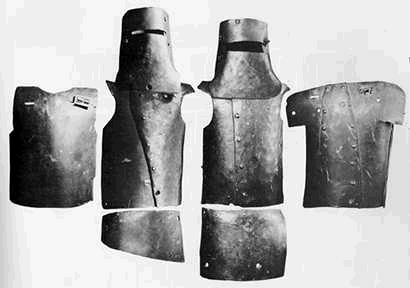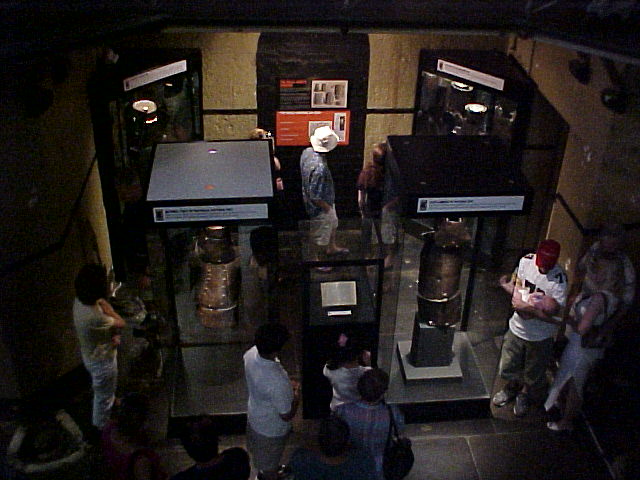For some reason best known to themselves
they stopped their war against the law for more than sixteen months. But the law
continued in its efforts to capture the Kellys. The Government in Melbourne had
asked the Queensland Government for a party of black trackers to help in the
hunt for the Kelly Gang.
![]()

 The nervous strain of dodging these invisible pursuers affected Nedís morale
and judgment.
The nervous strain of dodging these invisible pursuers affected Nedís morale
and judgment.
Early in 1880 the police were told that
mould-boards of ploughs had been stolen from the neighbourhood of Greta and Oxley.
They did not know, and could not guess, what the purpose of these strange
thefts, but they sent parties with black trackers to investigate. The trackers
discovered marks of high-heeled riding boots near the farms where the
mould-boards of ploughs had been stolen.
At a hide-out in the Greta Swamps, Ned and
his mates heated the metal mould-boards and hammered them over a green log to a
round shape, to protect their bodies in the pitched battle with the police which
they believed must come soon. Each suit of Armour consisted of two main
sections, front and back; these were held together at the sides by leather
laces, and supported from the shoulders by strong straps. An apron made from
part of the mould-board was attached to the edge of the front piece by a bolt
and swivel to protect the groin and thighs.
The weight of the armour suits was about eighty pounds, a heavy load for these
slightly build youths to carry. After the successful raid on Jerilderie,
the Government of New South Wales offered a reward of £2000 each for the bodies
of the outlaws, dead or alive. This, added to the Victorian offer, meant a grand
total of £8000.But where were they? Months passed, a year passed, while
informers, greedy for the reward, passed information to police. One informer was
Aaron Sherritt, who was engaged to Byrneís sister. His informing cost him his
life. He was spotted entering a police camp. On Saturday, 27th June 1880, though
guarded in his home four constables, Sherritt was shot dead by Byrne and Dan
Kelly. Ned Kelly was realising that his days were also numbered.![]()
 For Ned, who had
the physical strength to carry the extra weight of fifteen pounds.
For Ned, who had
the physical strength to carry the extra weight of fifteen pounds.
 For £8000
friends could become enemies. He began to make plans.
For £8000
friends could become enemies. He began to make plans.



